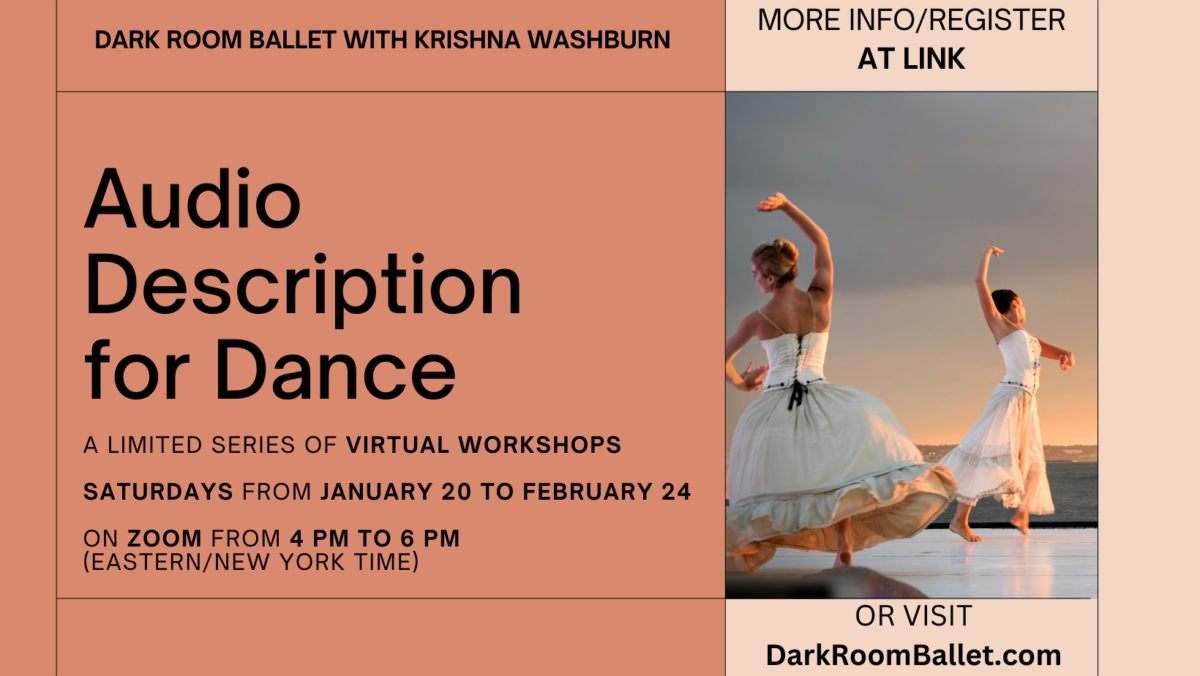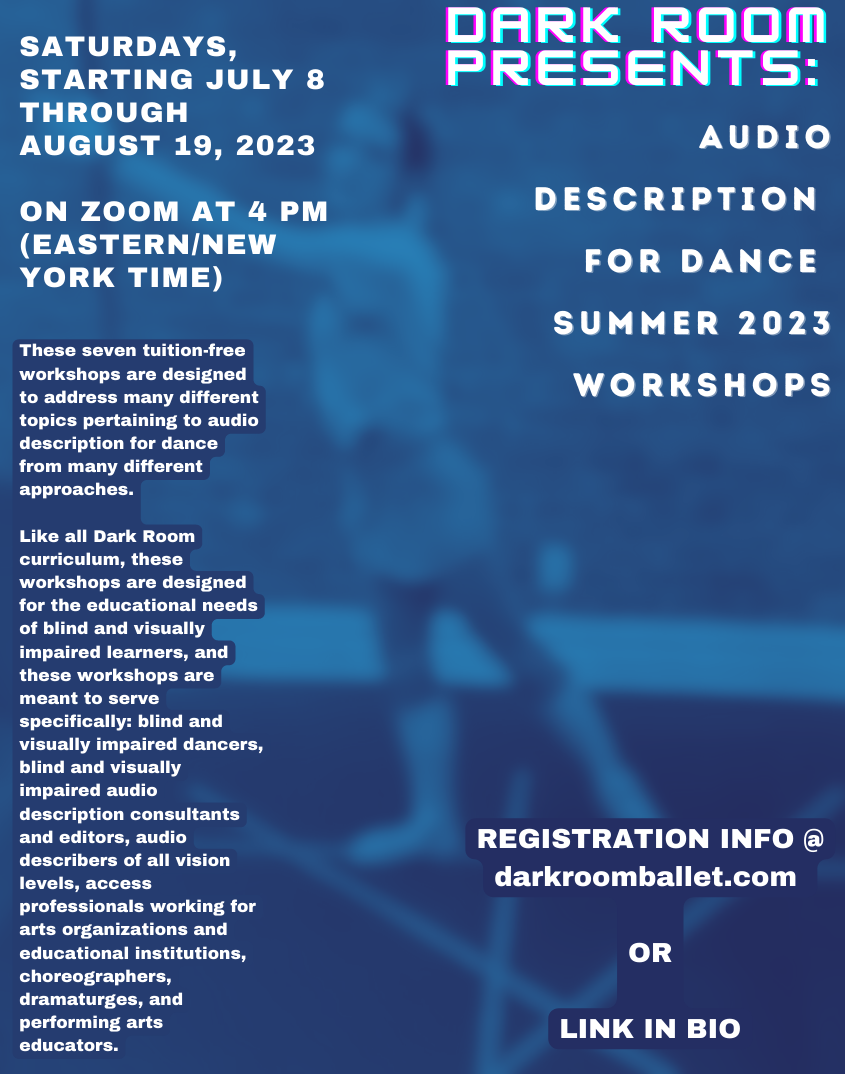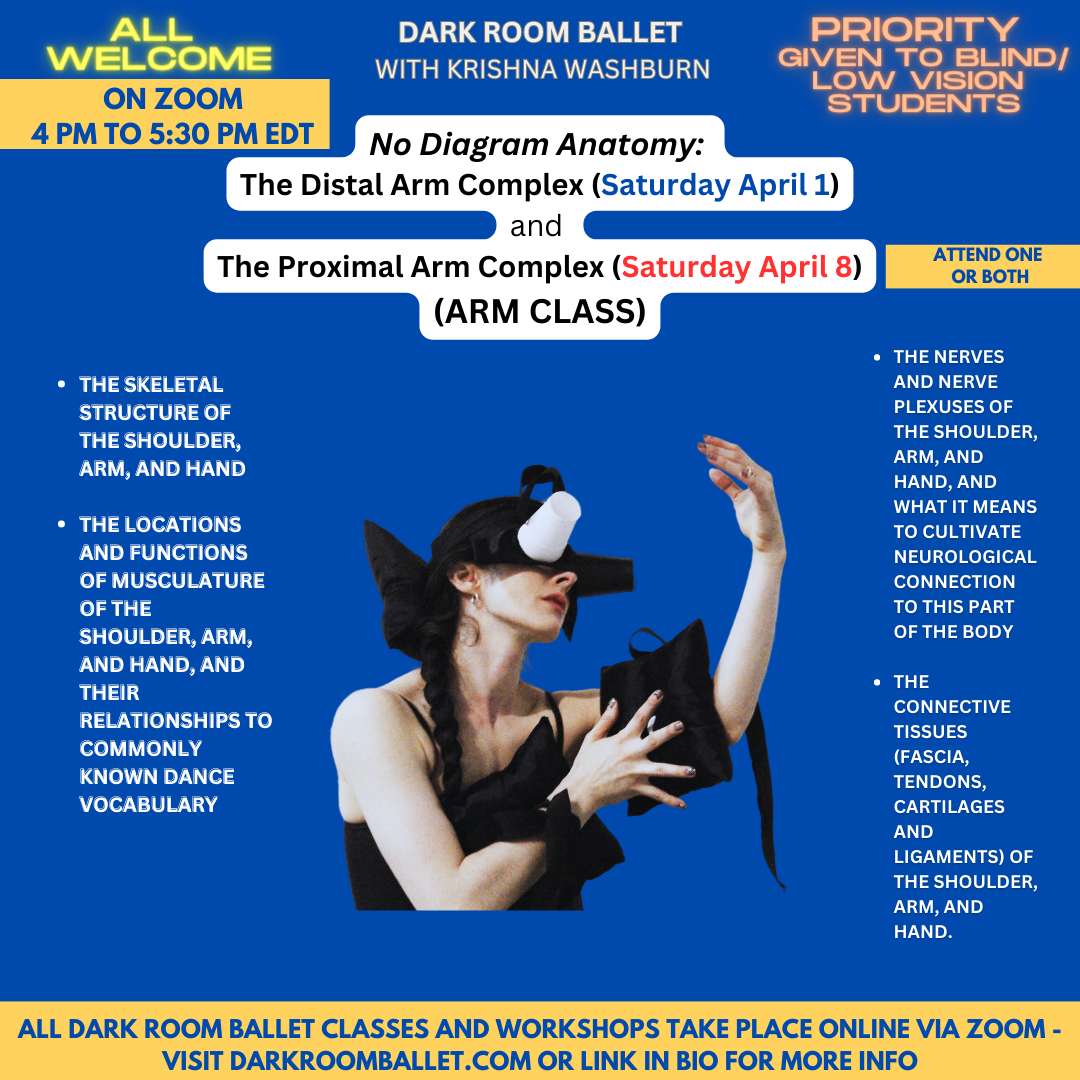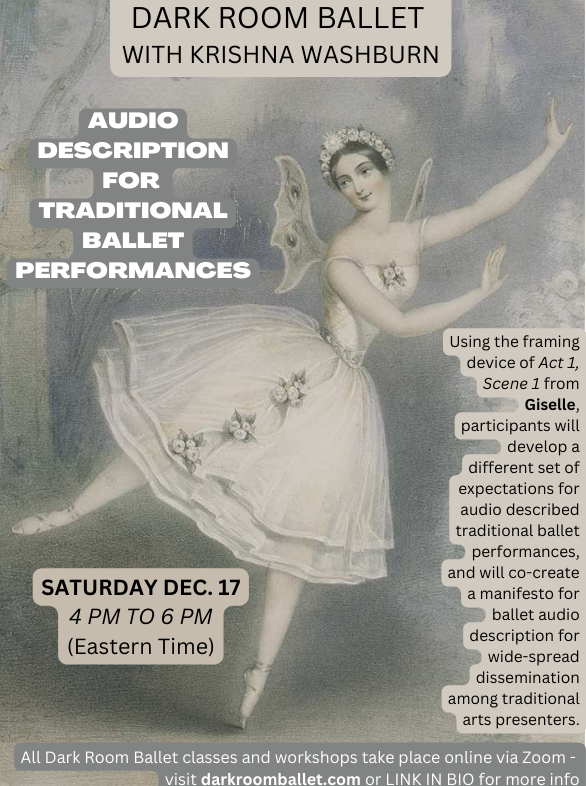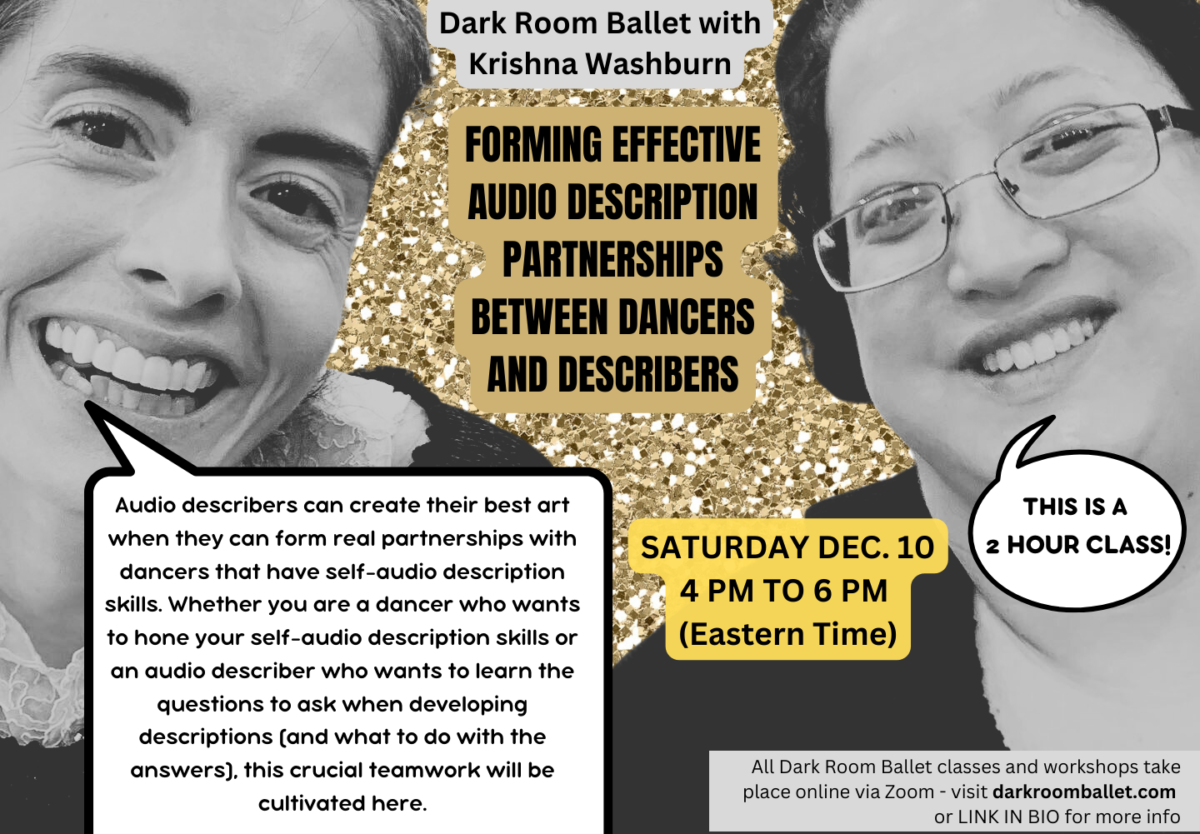The Dark Room Presents: Teacher Training, Summer 2024 (Saturdays, July 6 through August 10)
This special all-virtual course for current and future movement educators continues our commitment to access, inclusion and disability justice for blind and visually impaired people.
Should I Apply to Register for Dark Room Teacher Training?
Candidates for this course should:
- Be current or prospective movement educators in any movement practice, including but not limited to dance technique, dance improvisation, yoga, pilates, strengthening and conditioning, somatic practices, and choreography. This course prioritizes disabled applicants, especially blind and visually impaired people.
- Be able to commit to six weeks of intensive study from July 6 to August 10, including homework assignments.
- Have a strong commitment to making their own classes accessible to blind and visually impaired people.
- Applicants do not need prior experience teaching blind or visually impaired people and they do not need any specific educational or professional background.
What Topics are Covered in Dark Room Teacher Training?
- Fundamentals of the traditional blind dance techniques, including back body posture and using the taped floor as a mirror replacement.
- Extensive practice in creating movement definitions and descriptions that de-center sight.
- Theories of movement curriculum development that support the educational needs of blind and visually impaired people.
- Extensive practice in self-audio description (moving and speaking simultaneously).
- Approaches to answering student questions, and developing a reflection-based teaching practice.
- Breaking down stereotypes about blind and visually impaired students, and the associated stereotypes of best practice for teaching blind and visually impaired students.
Yes, I Want to Apply! What Do I Do?
Step One: Send an email to info@darkroomballet.com with the subject line Teacher Training 2024.
Step Two: You will receive a Teacher Training application from info@darkroomballet.com; complete the entire application and submit it to info@darkroomballet.com by Thursday, June 28, 2024.
Step Three: Your application will include a choice of time slots for an interview conversation with Krishna; Krishna will notify you about your interview call, which can take place on the phone or over Zoom. The interview call will last about ten to fifteen minutes and will not only give Krishna a better idea of your work and interests, but also give you and opportunity to ask her questions about the course.
Step Four: Show up to the first class on Saturday, July 6, 2024!
Image description:
A promotional flyer shows a black and white image on the left side showing a dancer in white looking down while in motion, observed by a person standing behind.
On white and gray backgrounds, black text reads:
DARK ROOM BALLET WITH KRISHNA WASHBURN
The Dark Room Presents:
TEACHER TRAINING
SUMMER 2024
Saturdays, July 6
through August 10
This special all-virtual course for movement educators continues our commitment to access, inclusion and disability justice for blind and visually impaired people.
Candidates:
Current or prospective movement educators in any movement practice.
This course prioritizes disabled applicants, especially blind and visually impaired people.
Info & register at link


